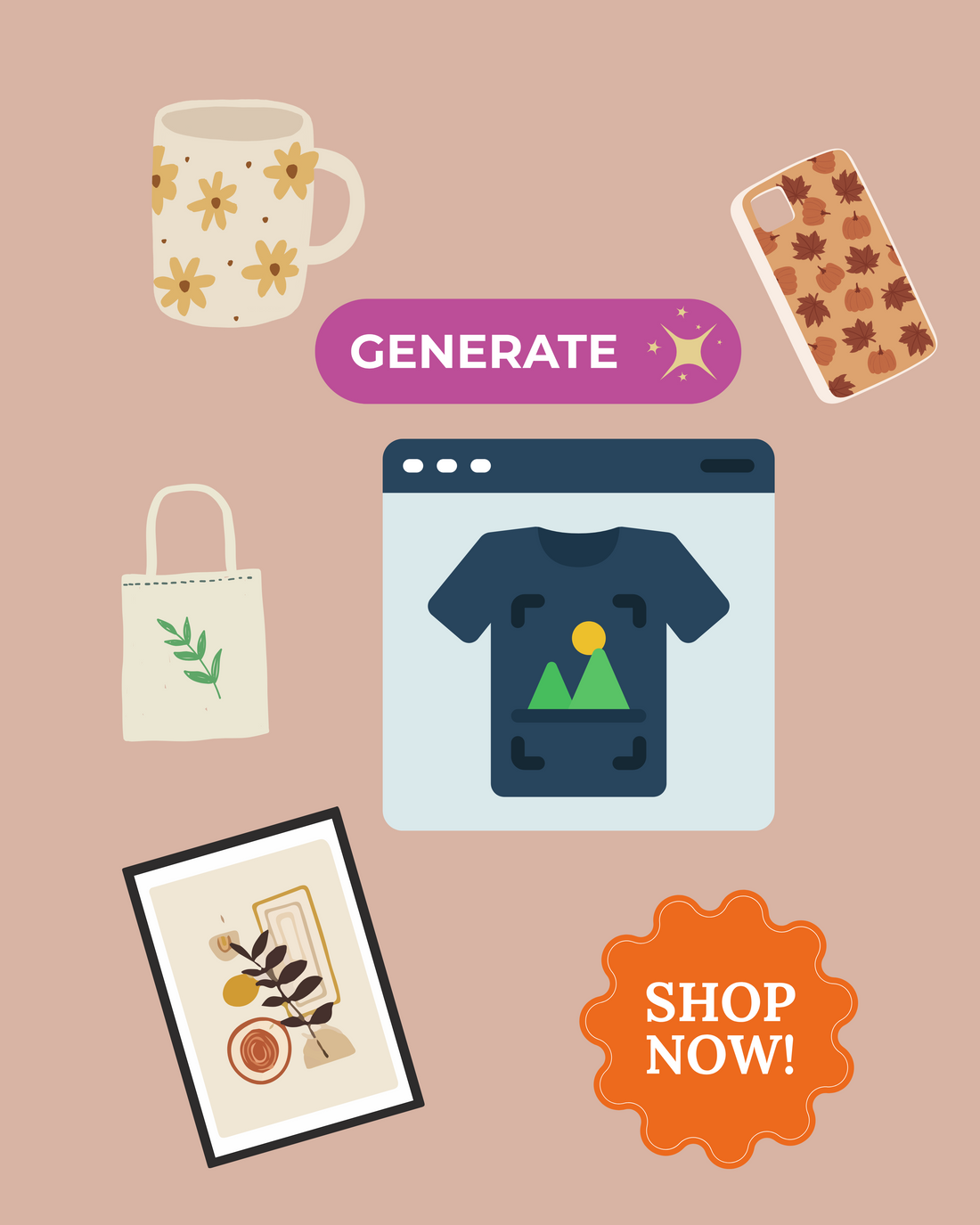
Day 8: Focus Mode Activated – Launching My Etsy AI Art Store (in 7 Days)
Share
After a week of experimenting, posting, and reflecting, I realized something: if I want results, I need focus.
So I stopped scrolling through ideas and made a decision.
👉 I’m launching an AI-generated art store using Printful for print-on-demand fulfillment, and Etsy as the sales platform.
It’s low-risk, no inventory, and scalable — and it works with tools I already know: Canva, ChatGPT, and a bit of creative energy. I'm not trying to build a whole brand or audience around it (yet). This is a test, and I'm giving myself 7 days to do it right.
🚀 My 7-Day Etsy Launch Plan
Day 1: Define My Niche + Aesthetic
To avoid wasting time or building the wrong thing, I’m starting with clarity:
- I’ll browse Etsy to spot trends (boho, minimalism, nursery, dark art, etc.)
- I’ll choose one specific niche and create a mini moodboard on Canva
- I’ll define a simple mission: Who is this shop for, and why would they buy?
🎯 Goal: Choose a niche with real demand and decide on a consistent art style.
Day 2: Create 5–10 AI Art Designs
Now it’s time to get creative — quickly:
- I’ll use an AI art generator (like Midjourney or Leonardo.ai) to create designs
- I’ll enhance or crop them in Canva for final polish
- I’ll save high-res versions ready for print (300 DPI, correct ratios)
- I’ll organize designs in folders by product type
🎯 Goal: Finish at least 5 polished art files that look amazing printed.
Day 3: Set Up My Printful + Etsy Store
Time to make it real:
- I’ll create or finish setting up my Etsy shop (logo, banner, bio)
- I’ll open a Printful account and connect it to Etsy
- I’ll select products like framed posters, canvas prints, or tote bags
- I’ll upload my art files and generate clean mockups
🎯 Goal: Printful and Etsy are connected, with my first products ready to list.
Day 4: Write Listings + Do Etsy SEO
No one will buy if they can’t find the products, so today is all about Etsy search:
- I’ll write SEO-friendly titles and clear, inviting descriptions
- I’ll use all 13 tags for each product and research keywords using Etsy search
- I’ll categorize and price each item competitively
- I’ll publish my first 3–5 listings
🎯 Goal: Have several optimized products live and ready for traffic.
Day 5: Add 5 More Listings + Expand Product Options
With the basics live, it’s time to build depth:
- I’ll create 5 more designs using my existing niche and style
- I’ll consider using the same design across multiple product types (poster + tote bag, for example)
- I’ll create new listings with mockups and optimized tags
🎯 Goal: Reach 10+ live listings to boost visibility in Etsy’s algorithm.
Day 6: Optimize for Etsy Search (No Social Needed)
Instead of sharing on Instagram or Pinterest, I’ll double down on Etsy SEO:
- I’ll review competitor listings to reverse-engineer keywords
- I’ll fine-tune my titles, tags, and thumbnail images
- I’ll update listings based on Etsy’s auto-suggestions
🎯 Goal: Improve search rankings and boost discoverability without social media.
Day 7: Analyze, Learn, and Adjust
Time to step back and look at the data:
- I’ll check which listings got views or clicks
- I’ll tweak thumbnails or titles for low-performing products
- I’ll create a simple spreadsheet to track what’s working
- And I’ll make a plan for the next test — maybe another niche or product line
🎯 Goal: Get clear on what worked and what to do next — smarter and faster.
💬 Final Thoughts
This isn’t about going viral. It’s about getting proof.
If I make a sale — great. If not — I’ve still built a store, learned a skill, and created a digital product line I can evolve.
The best part? I’m not stuck in planning mode anymore. I’m building, testing, and moving forward.
See you tomorrow with my niche and first batch of designs. Time to make this happen!